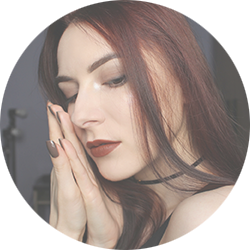







Welcome Back
Sign in to be closer to your community!
Follow other divas, like and comment
on their posts, message them, and see
who loved your posts!
Invalid username or password
You have not verified your account by clicking on the link we sent you via email. Please check your email folders (including your Spam folder) and click on the verify link sent.
Email is required
Password is required








Join FashionPotluck.com
Create your own profile in order to create content, follow other divas and like their posts, use our own messenger, and be a part of a growing international women community!
WELCOME TO OUR COMMUNITY
Fashion Potluck -
the first social media
platform for women.
You are free to read/watch & create content,
express your true self, and interact with others.
Join for free
Already a member? Log in here.
Purchase Alert
Dear Queen, you can only buy from one seller at the time. Please finish this purchase first in order to buy from another FP member
Comments
Please select one platform to continue
Please select one platform to continue
Please select one platform to continue
Please select one platform to continue
Please select one platform to continue
Please select one platform to continue
Please select one platform to continue
Please select one platform to continue
EDITOR APPROVED
You are wondering what is this 'Editor Approved'?
Well, this is pretty awesome! In order for the post to qualify and receive this accolade, it has to have a minimum of 700 words and two images (at least one original).
Receiving this accolade means two things: 1) Your content is amazing! Good job! 2) Your content qualifies for our monetization program. Every week two of the most read posts receive monetary rewards.
Have the badge & want to monetize your content?

LIFESTYLE

Sclerotherapy can relieve discomfort and negative effects produced by damaged veins in addition to reducing the appearance of varicose or spider veins.
Itching, discomfort, cramping, and discoloration are all symptoms of varicose veins. Varicose veins are larger and more severe than spider veins. Women are more likely than males to have varicose veins, although anyone can develop them.
Sclerotherapy's main goal is to help persons with a spider or varicose veins minimize the symptoms of those problems while also improving the appearance of the affected areas. Doctors may employ sclerotherapy to treat hemorrhoids on a rare occasion.
The best treatment for you is determined by your preferences and individual symptoms. However, because sclerotherapy is a less intrusive technique, you might want to explore it. It's possible that it'll alleviate your symptoms and the appearance of your veins enough that you won't require any more surgery.
Areas that sclerotherapy can treat
Varicose veins most commonly form on the legs and feet.
The afflicted veins may appear elevated, discolored, or bloated, and some may be deeper beneath the skin, causing pain. Spider veins are smaller and closer to the skin's surface, and they might be red, purple, or blue in color.
Sclerotherapy is often used to treat hemorrhoids when they are minor and internal. It can also be utilized if your hemorrhoids bleed or if you are unable to have a surgical procedure like a hemorrhoidectomy due to other health problems.
Sclerotherapy can be used to treat spider veins and varicose veins in the thighs, calves, ankles, feet, face, and anus, depending on the size of the affected veins.
Who is a candidate for sclerotherapy?
Most persons with varicose or spider veins can benefit from sclerotherapy, while the surgery is most commonly performed on women between the ages of 30 and 60. Because these problems grow more visible as people age, they are less noticeable in males who have more hair on their bodies.
This technique is not suitable for people who are bedridden, breastfeeding, pregnant or have given birth within the last three months. You'll have an assessment with a vascular specialist to see if you qualify for the operation, and they'll be able to tell you if it's right for you.
How the procedure works
Sclerotherapy treatment for venous issues might take anywhere from 30 to 45 minutes, depending on the severity of the condition. If your legs are being treated, your doctor may instruct you to lie on your back with your legs elevated.
Your doctor may utilize an ultrasound as part of the surgery, depending on how deep the injured vein is beneath your skin.
Your doctor will begin the operation by cleansing the skin around the veins to be treated. Your doctor will then use a small needle to inject a sclerosing chemical into the injured vein.
Risks and side effects of sclerotherapy
During sclerotherapy, you may experience slight cramping, stinging, or burning in the injected vein. It's possible that the treatment will be uncomfortable, especially if the sclerosing substance spills into the surrounding tissues.
Bruising, stinging, swelling, skin discoloration, pain, and raised red areas around the injection sites are all common side effects of sclerotherapy.
In a few days, all of these adverse effects should go away. Brown lines or patches may appear around the treatment region. These usually go away in 3 to 6 months, although they might stay longer or even become permanent in certain situations.
The bottom line
Sclerotherapy works better on smaller varicose veins and spider veins. Within a few weeks of treatment, you may see a difference. The visible improvement of bigger varicose veins can take up to four months.
To totally eradicate varicose or spider veins, you may require multiple sessions. It's critical to have reasonable expectations about sclerotherapy's effectiveness. Sclerotherapy does not ensure that no visible signs of varicose or spider veins will remain following the procedure.
Comments
Related Posts
- The Evolution of Women's Fashion: Key Historical Eras and Styles by Chloe Williamson 0
- 9 Things No One Tells You About Invisalign, But You’ll Wish You Knew Sooner by Monica Quinn 0
- Keep Diabetes in Check: 6 Fiber Superfoods You Should Eat by Monica Quinn 0
More Posts
- Why Cowboy Ties Are Making a Bold Fashion Comeback This Year by Rocky Mountain Western 0
- Havva Fashion – Trendy Women’s Wear for Every Occasion by 0
- Abiti da Sposa 2026: Eleganza Moderna, Tradizione Italiana e Tendenze da Non Perdere by Angelo Sonnino 0
Vote content out
Reason for voting this content out?
Reason for voting this content out?


 Login with Google
Login with Google Login with Twitter
Login with Twitter






 by
by
Add Comments